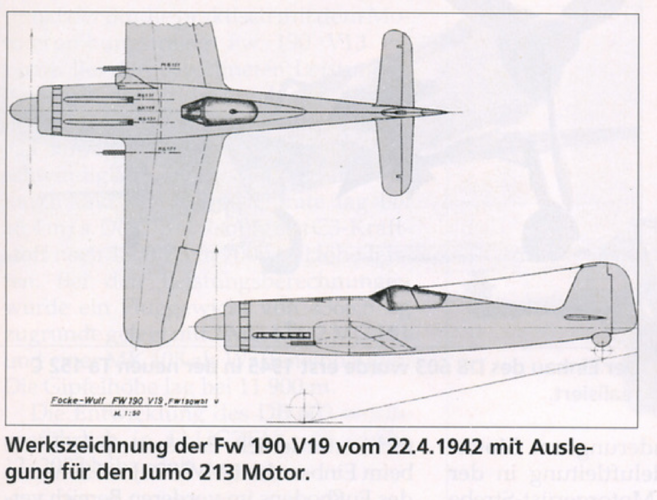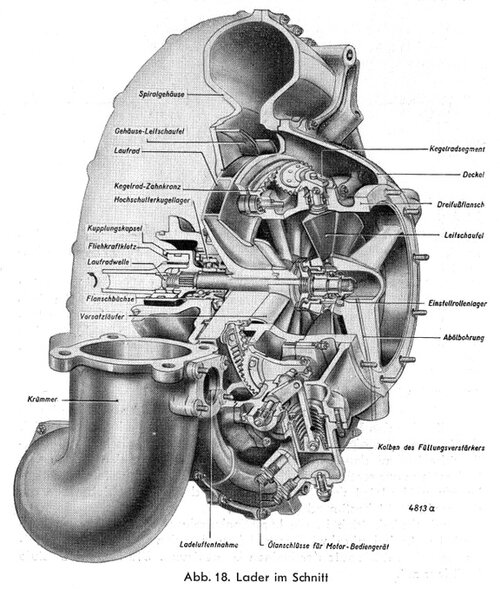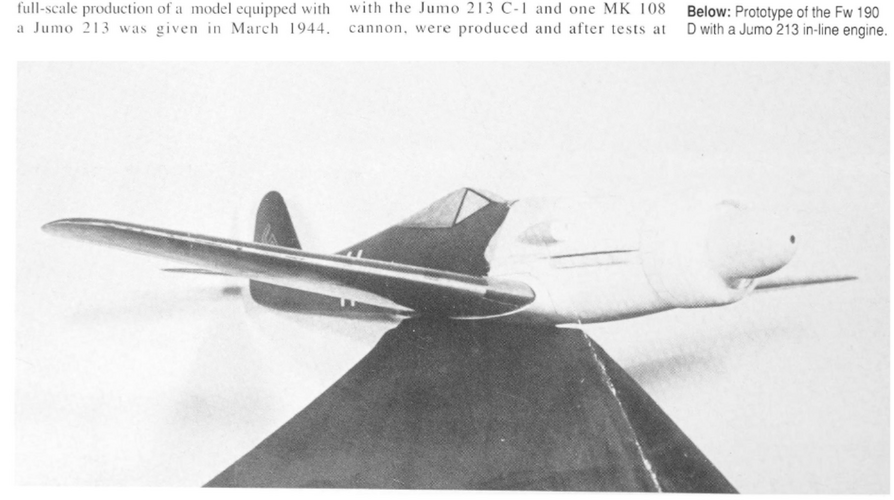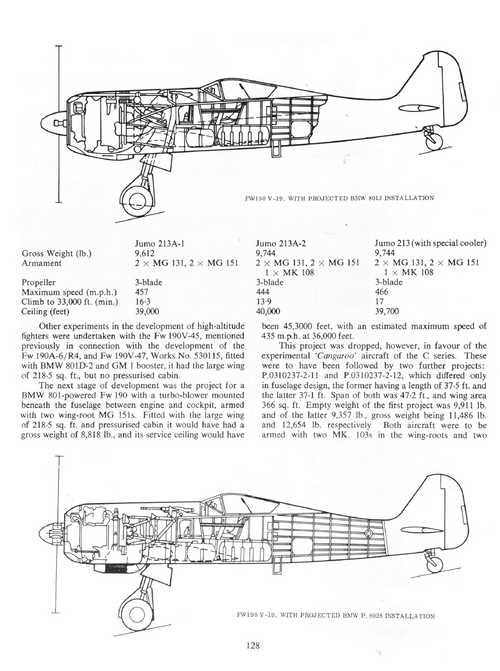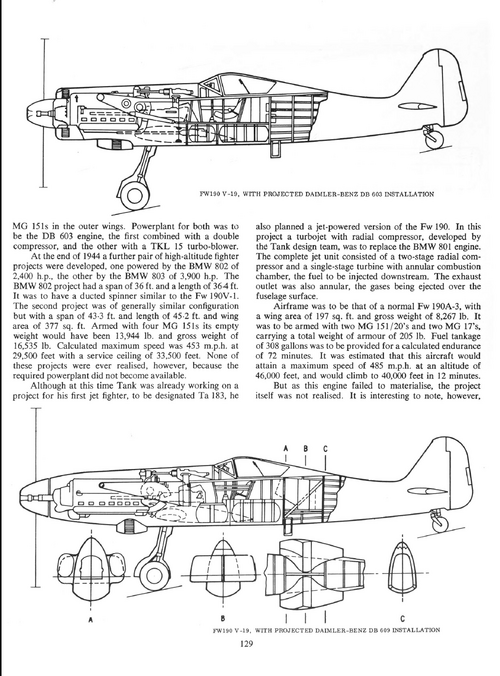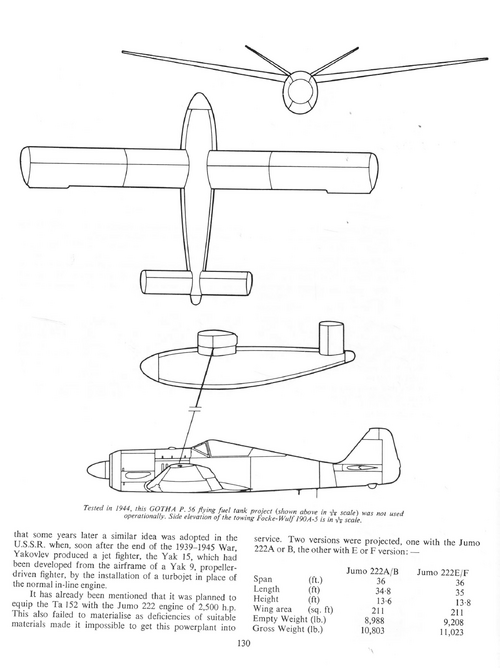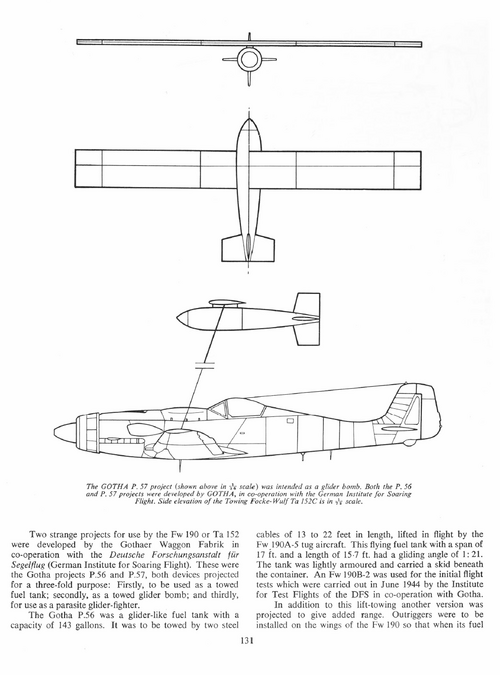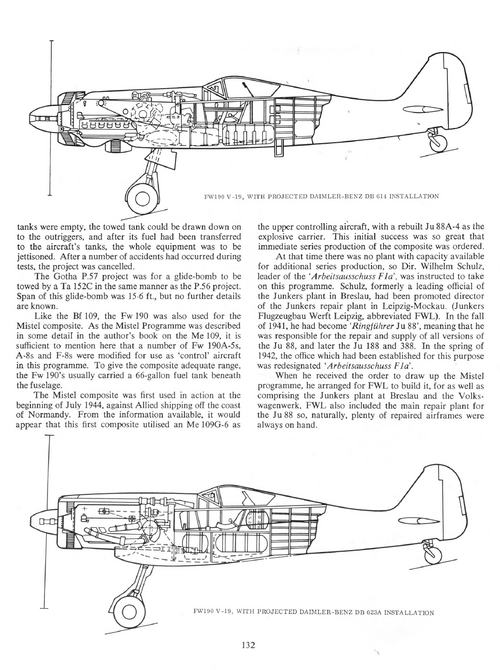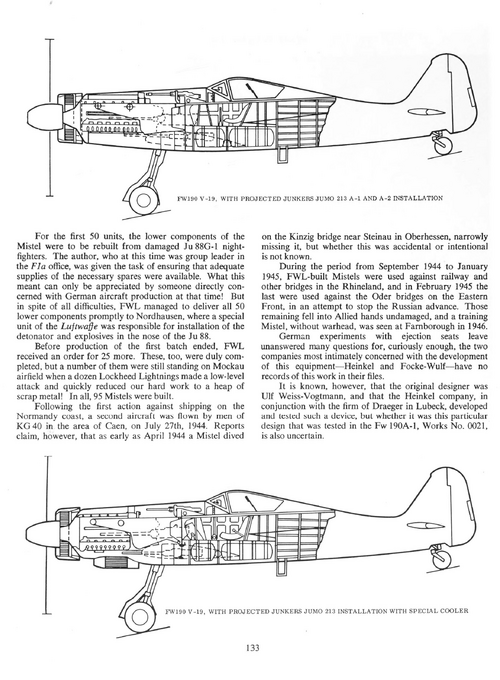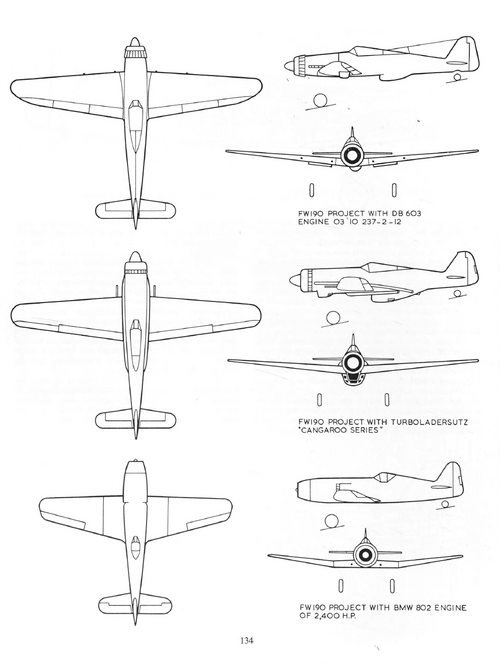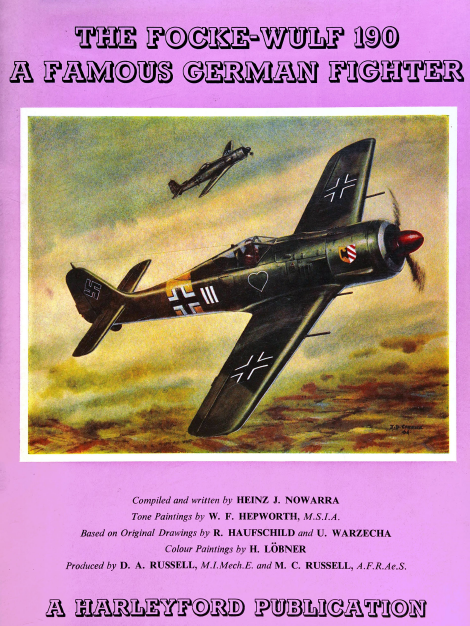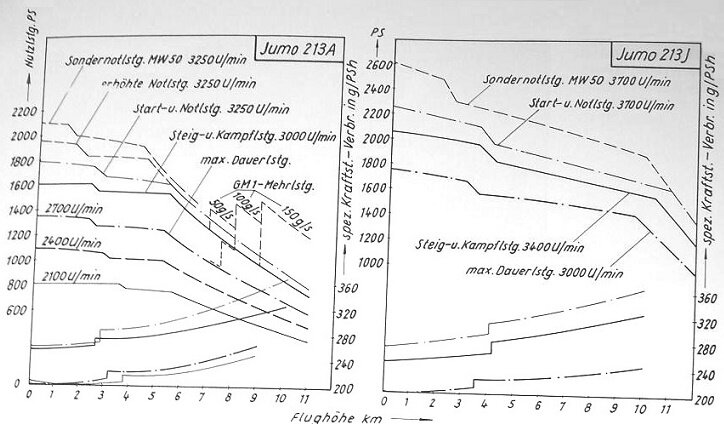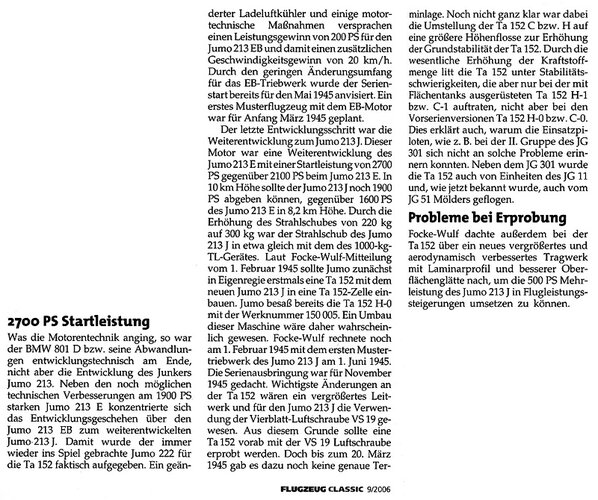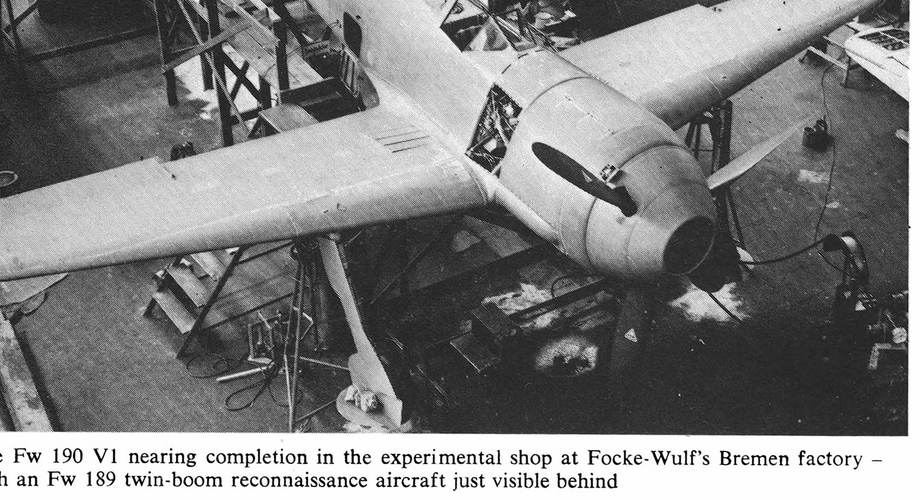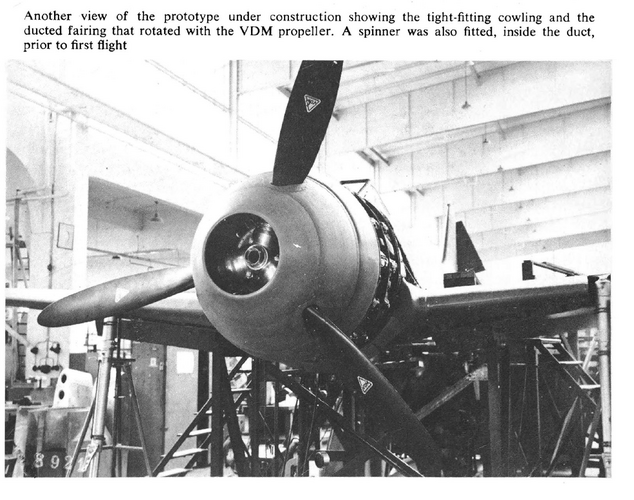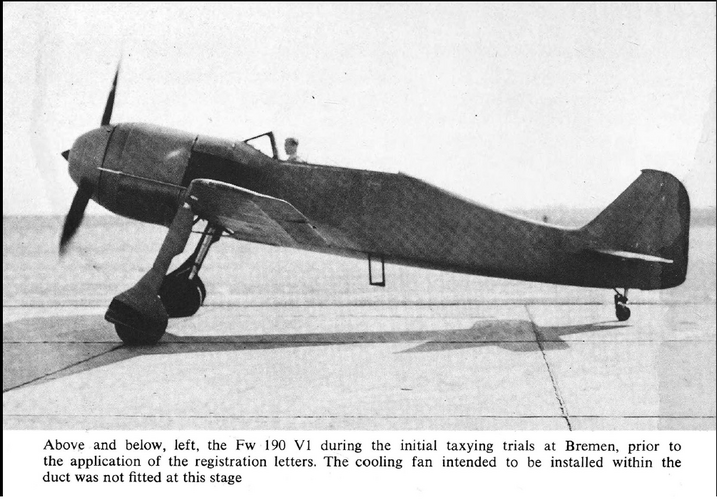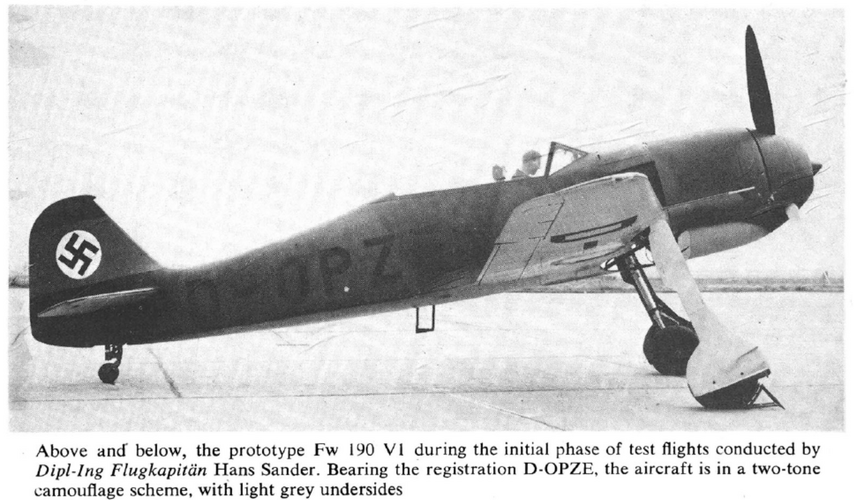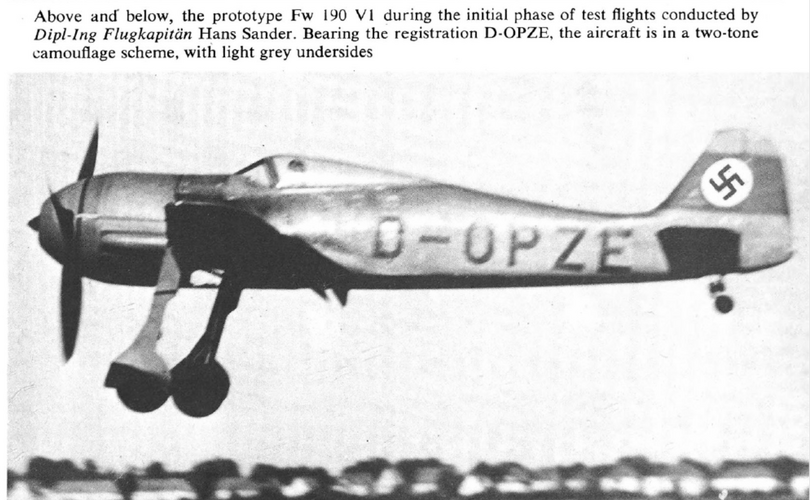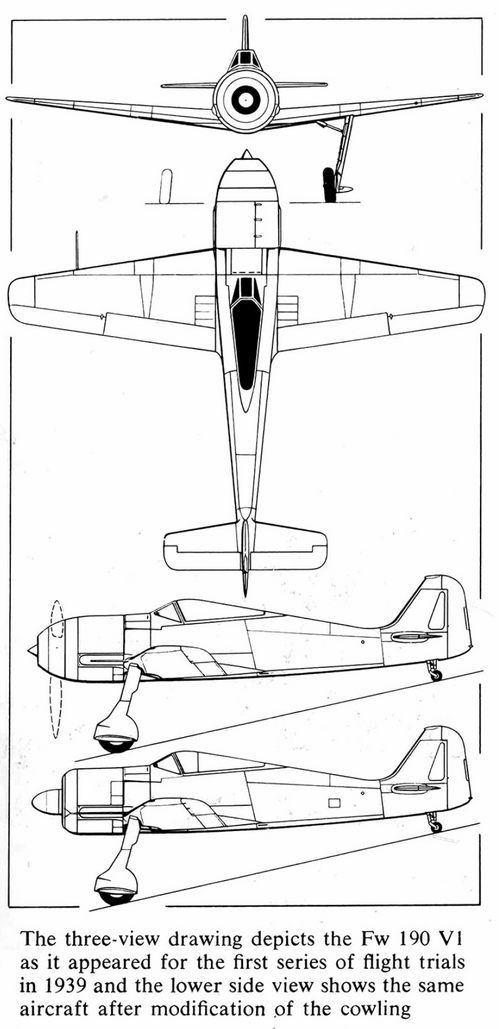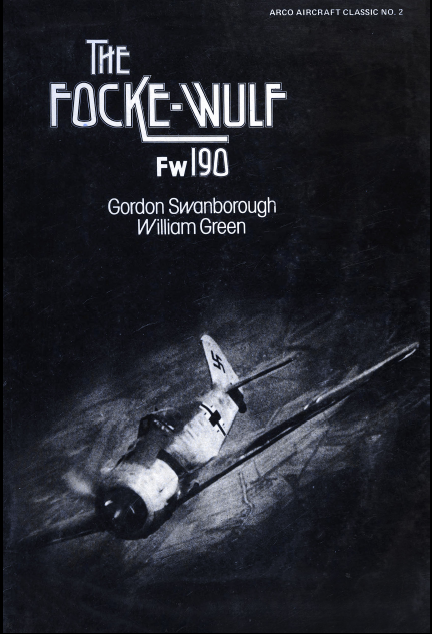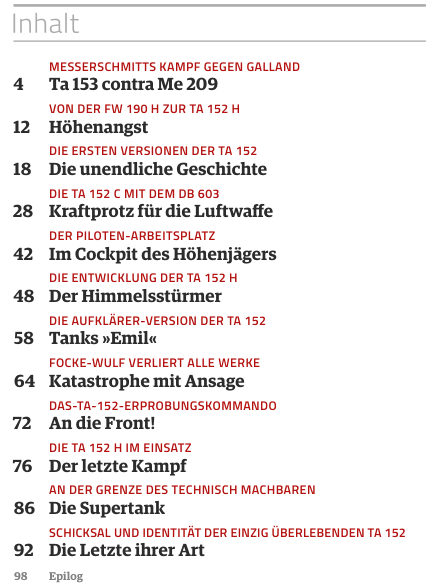Hi Spicmart,
Is something known about this aircraft and its properties, flight characteristics et al?
Why wouldn't they have gone with this configuration? It looks like a Hayate from above.
The article in Flugzeug Classic 06/2007 explains that the wing was redesigned based on the A-2 to allow the installation of different engines. The wing was moved forward by 120 mm, with the landing gear geometry being changed so that the wheels are 220 mm forward of the original position.
As the caption in the above scan is not entirely legible: It's "Focke-Wulf FW 190 V19, FW 190WD1". No explanation what "WD1" might mean is provided.
(The armament captions are hard to decipher even in the original, but it looks like MG 151 in the wing root, MG 131 in the cowl, and an MK 108 as engine cannon to me.)
Basically, Focke-Wulf compared the Fw 190's performance as a defense fighter with the following engines:
- BMW 801C, BMW 801D, BMW 801J (turbo-supercharged 801), BMW P. 8028 (two-stage supercharged 801 with intercooler)
- DB 603, DB 614 (improved, high-altitude DB 603), DB 623 (turbo-charged DB 603)
- Jumo 213 A2, Jumo 213 "mit Vorstufe", Jumo 213 with intercooler
(It's not entirely clear to me what "mit Vorstufe" means ... as it's also called "axiale Vorstufe" in the text, maybe it's the swirl throttle?)
The DB 623 wouldn't have fit into the new airframe, but was included in the comparison anyway. The DB 609 and DB 624 (extreme high-altitude DB 603 with 15 km full throttle height) wouldn't have fit and were disregarded for the comparison.
The criterion for the performance was the maximum distance from the take-off point that the defense fighter could reach in 20 minutes, given a defined combat altitude. The combat altitudes considered were 6 km, 10 km and 11 km.
The DB 603-engined variant ranked first for 6 km and 10 km. If armament was reduced, it also ranked first for 11 km.
The DB 614-engined variant ranked fourth for 6 km, but second for 10 km and 11 km.
The Jumo 213 with pre-stage and the Jumo 213 A2 (with also had a pre-stage) ranked second and third for 6 km, and third and fourth for 10 km, but didn't make it to 11 km within 20 minutes. These engines apparently ran on C3 fuel, as the Jumo 213 A2 has an additional entry marked with "87 octane".
The DB 623 as extreme high-altitude engine was poor for 6 km and nothing special for 10 km, but ranked third for 11 km.
The BMW 801J was ranked fourth and last of the engines that reached 11 km, and took last place for 6 km and for 10 km as well. (Disregarding the poor old BMW 801C, which didn't make it to 10 km in 20 min).
All other engines did not make it to 11 km in 20 min either.
I would argue that the strong emphasis on climb performance probably was not really reflecting the performance requirements a fighter for the defense of the airspace over Germany would require, but as this comparison was done in April 1942, Focke-Wulf (and the RLM) probably didn't really have a realistic idea yet of what would be required in 1943 and 1944.
Regards,
Henning (HoHun)

